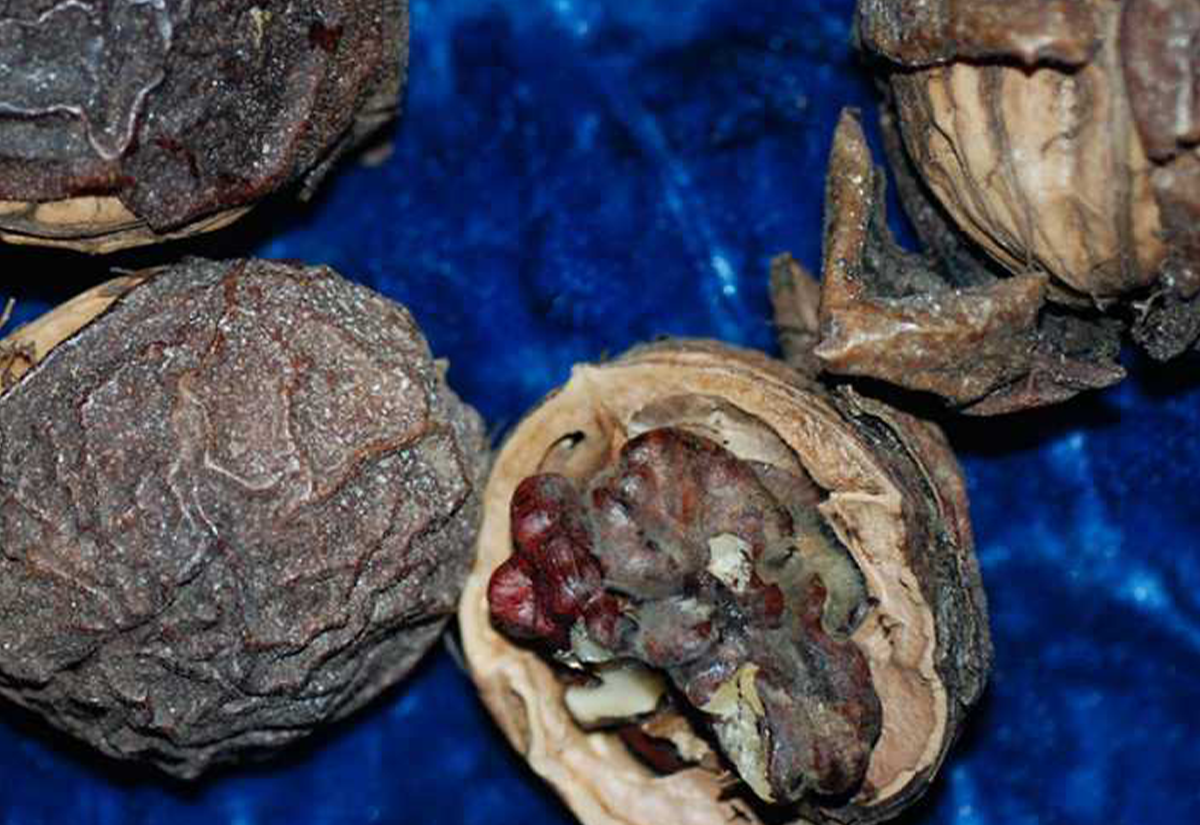
Walnut blight, sunburn or insect damage that compromises the integrity of the walnut hull can open the way for mold fungi.
Sac Valley Walnut News reports that due to increased reports of walnut mold by California growers, the California Walnut Commission has funded research into management of walnut mold by Plant Pathologist Themis Michailides at UC’s Kearney Agriculture Research and Education Center.
In 2020, due to higher levels of mold, walnuts were examined at a stage where the fungal mycelia had not covered the entire kernel. It was determined that for nuts collected from the tree, mold initiated at higher levels from the stylar end than the stem, leading to the possibility that some infections by mold fungi could start at bloom time. Luke Milliron, UCCE orchard systems advisor in Butte, Glenn and Tehama counties, said bloom spray trials were initiated at this year’s bloom to determine the cause.
Most walnut molds are caused by Fusarium and Alternaria species. These infections are called brown apical necrosis, or BAN, because the black, blighted lesions are on the apical end of the nut. Walnut mold does not begin to develop until the hull completes maturity and begins to split. As the fungal infection spreads, the hull is decayed and the kernel is affected.
Sunburn can also be a predisposing factor. Mold is often found on the sunburnt side of developing walnuts. Walnuts on trees that have less foliage to shade them are at higher risk of sunburn and mold infection. Insect-infested nuts also have higher incidences of mold. Controlling sunburn and insect damage will help lower mold infections. Another critical component is timely shake and pickup. UCCE Butte Advisor Emeritus Bill Olson’s research showed that mold and other quality issues in walnuts increase the longer the nuts are on the tree or on the ground. The Ivanhoe and Livermore varieties are more susceptible to mold infections.
Fungicide trials to control walnut mold were done in 2019 and 2020. The 2019 trial in a Butte County Chandler orchard used the fungicide Rhyme (flutriafol). A single spray at 30% or 60% hull split reduced mold by more than 73%. Last year, in the same orchard, two applications of Rhyme, one at three weeks before hull split and the second at 20% to 30% hull split, resulted in 7% mold while untreated control had 13% mold. Sac Valley reported the difference was not statistically significant. More efficacy testing of various chemical controls for walnut mold are planned, and these results will be reported at: ipm.ucanr.edu/PDF/PMG/fungicideefficacytiming.pdf.











